Adaptability & Training
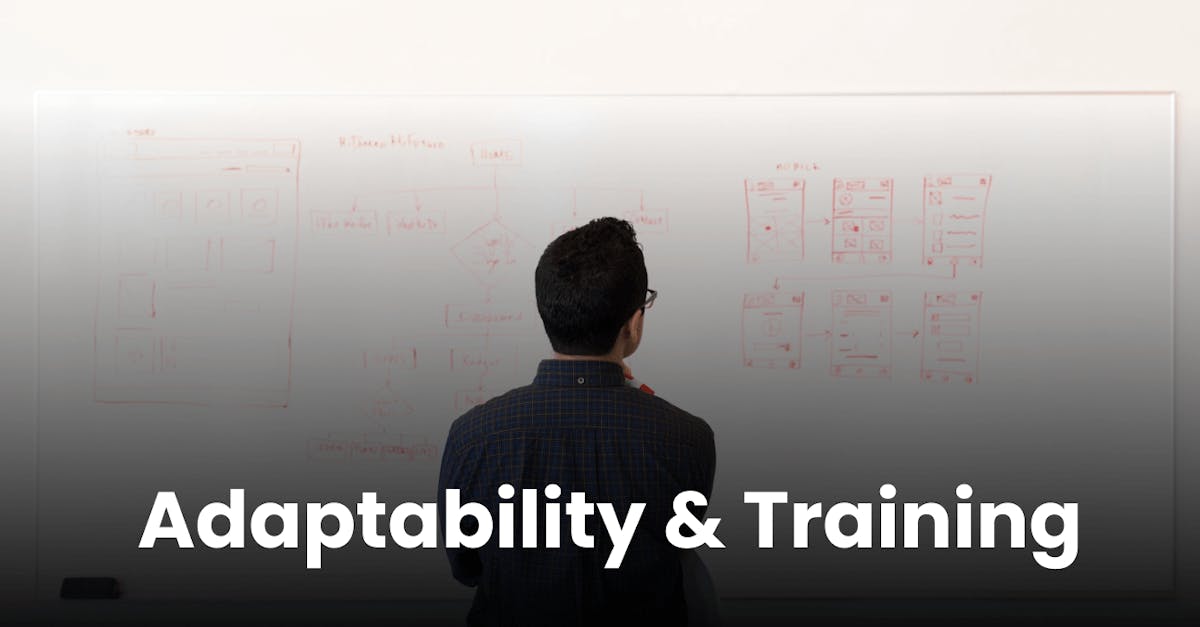
I’ve spoken before about how important it is for businesses to roll with uncertainty, and this holds true when it comes to adaptability and training your workforce. In this article, we’ll take a look at how workplaces can build training that is adaptable to different situations. In other words, lessons that have a high “adaptability training quotient”.
What we usually do
Trainers and educators of all kinds most often build ‘closed’ or ‘specific’ lessons, modules, and courses. The goal of each teaching unit is to pass on and/or practice certain information or skills. Together, the units make sure the learners have the material or know-how they need.
This methodology is important. In many cases, transmitting information directly is much more effective than learning by trial and error.
The drawback, however, is that the lesson(s), module(s), and course(s) are static, serving one purpose only. Creating new teaching units requires the educator or trainer to start from the beginning—even if you are “speed authoring” via content authoring tools.
After the basics are learned, I am suggesting that enterprises use a more open approach when building further lessons in order to have education units with a higher adaptability training quotient.
Students teaching students
Social learning (aka peer learning) has proven itself to be pedagogically valid. In other words, it works and works very well. For more facts about the effectiveness of social learning, click here. Let’s dive in further.

How it works in EdApp
Once you enable Social Learning, it is available on a slide-by-slide basis within your LMS lesson. Students can post comments to engage in learner-trainer instruction and discussion. With this simple addition, your lesson is already more adaptable, since it will now suit any group using it.
“But the slides still have the same content,” you say.
Don’t worry…getting to that just now.
Our next step is thinking about which slide templates we want to use. Which ones will be most easy to adapt? Here are some options.
I. Content
Even after the basics, you may wish to provide your students with further material. Below I offer some ideas for passing on further content.
VIDEO
Videos are a great teaching tool. To adapt a lesson, just swap out the existing video URL for the new, relevant one. You can also upload a video slide to be served directly from the EdApp Platform. Via the enabled social learning component, students can answer/discuss any questions you post.
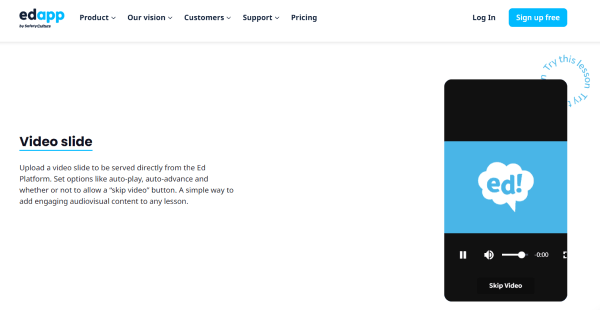
IMAGE GALLERY
Chances are, your business has got lots of suitable images. Put them to great use. Uploading images is usually a quick process, allowing you to mix and match images as needed.
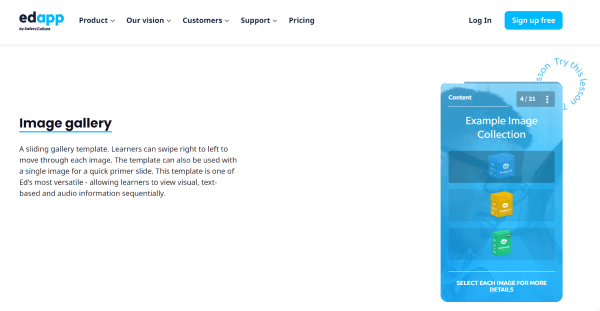
Below are some open tasks with pictures. In each task, there is no ‘right answer’. Rather, most images could be correct depending on how the learner justifies it…and that’s exactly the point. To successfully justify their choice, the trainee must draw on learned material.
- Identify the odd one out
- Choose the best/worst example
- Which images could be a pair/opposites and why?
The open nature of the tasks means that the same image gallery could easily suit a number of different training areas. For example, the odd one out for workplace safety trainees will not be the same as that for harassment training learners even though the images could be the same – – depends on how you look at it.
II. Surveys
By their nature, surveys are quickly adaptable. You pose one question or statement and have people react. Then your learners discuss the results dynamically via their comments. Changing the question/statement is simple and fast, so this template can be adapted quickly.
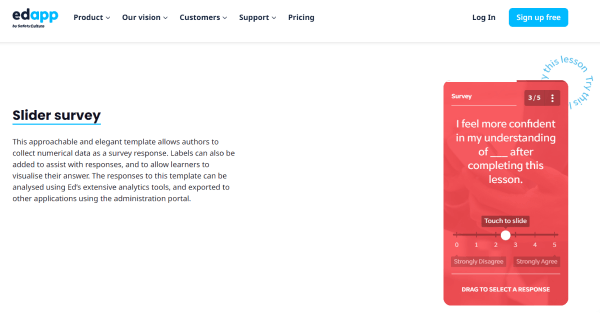
If there is a majority opinion, trainees can show why that is, bringing facts from previous lessons.
If there is wide disagreement, again, your students can theorize the reasons, basing their thoughts on learned material.
III. Concepts
A Missing Word Concept Template allows students to drag words from a word bank to complete the sentence. If your word bank contains valid distractors, you have a more open task.
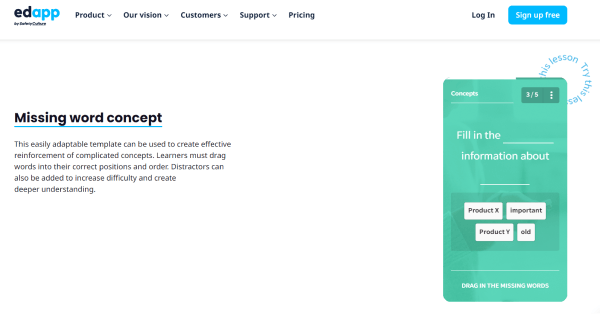
For example, Your sentence is ‘The ___ important part of customer service is ___.” The word bank contains the words ‘most, least, attention, politeness, knowledge’.
Your trainees complete the sentence and then post their completed sentence in a comment.
Consider how many ways this sentence could be completed…and a valid case could be made for each one! That’s the energetic discussion your learners will have, trying to convince the others that their completion is the ‘correct’ one. In order to do this, they will need to review previous lesson points and concepts.
Again, this template is easily tweaked to suit different training areas.
Does peer learning have validity besides producing lessons with high adaptability training quotients?
Yup!
Data from business studies
Recent research with business studies students showed that student discussions facilitate ‘8 major learning outcomes’. Students are better able to:
- Take opposing arguments and find the consistencies
- Think independently
- Develop cohesive reasoning to reach a general agreement
- Build interpersonal relationships to reduce the other’s fear of sharing their opinions
- Encourage peer motivation
- Increase their and others’ engagement in tasks
- Understand and welcome nuance
- Integrate novel ideas from a wide range of perspectives and disciplines
Findings from high tech
Incorporating multiple intelligences in teaching positively affects motivation and thus learning outcomes. Social learning is a first-rate solution.
The idea is to create role-plays of real-life, authentic situations. For example, a debate about budget allocation or a project to develop a client marketing campaign. When this is paired with peer learning, trainees practice:
- Intrapersonal intelligence—getting more in touch with their emotions, motivation, intentions, etc.
- Interpersonal intelligence—relating to others more effectively to create more harmonious relationships
- Linguistic/Verbal intelligence—using the words to get their points across
- Logical/Mathematical intelligence—developing better analysis and reasoning when problem-solving
The results from both studies show that open lessons, including social learning, better equip employees for their workplace positions. This is especially so in companies that have a high level of teamwork. In other words, the adaptability in your training, in turn, develops adaptability in your workers.
Outside sources
https://link.springer.com/article/10.1007/s41463-020-00099-2
https://www.frontiersin.org/articles/10.3389/fpsyg.2021.770473/full
Author
